Star Ruler 2 was released on March 27, 2015 by Blind Mind Studios. The game is a 4X/RTS hybrid that tries to reinvent many of the traditional concepts of the 4X genre by having a unique diplomacy system and a different approach to planetary management and expansion. The game offers a fully customisable ship designer and is pause-able, with the ability to issue orders while paused and the means to control the speed of the game. The game also supports multiplayer.
This game lets players do things they can only dream off in other 4X games. Want to build artificial planets, build Ring Worlds, blow up planets, or blow up stars? You can. You can set up dry docks to build super-sized ships that would normally be beyond your reach, or setting up orbital shipyards that can have a dozen worlds supporting it so that it can build these same titans in a timely manner. Build planetary thrusters and take a planet for a spin. Even the ship customizer lets the player define the ships’ shape and the position of its modules completely free of restraint.
However, these ideal things come with a price, as some of these perks may be the problem itself for some players. Though many of these issues can be considered nit-picks, they add up to a point it does impact the overall enjoyment of the game. This is due to the lack of immersion and atmosphere, and while solid mechanics can take a game far, it is not a substitute either. Someone’s enjoyment of Star Ruler 2 will come down to how important immersive elements are versus solid gameplay mechanics.
The Basics
The game gives the player a good amount of choice. As mentioned, it offers both a single-player and multiplayer mode. It also offers a sandbox mode, where the player can test designs or pre-make ship designs without needing to fully experiment inside of the game so as to not bog down the gameplay. The game also supports intensive modding. The player can also enable the Remnant super ship “alternative victory” condition.
When setting up a new game the player can choose the race to play, the number of opponents and their races with their difficulty set individually, and set up the galaxies. You can have more than one galaxy, and there’s several shapes you can choose for each. Want three separate cluster groups and two spirals? You can have it. Each galaxy can have their number of stars individually selected. The game also has no limits, though a pop-up will appear to warn you that you’re probably exceeding modern computing technology to run the game.
Races can be customised but it’s more of an all or nothing change. You can choose your government but this only plays a role in your starting bonuses. There are only two categories that significantly impact the game: your selection of FTL and your choice of the type of “Life” you are. These tend to be a fixed category that influences how each race plays. There is the default version with several variations that changes some aspects of how you play the game (by giving you an extra mechanic to manage that in turn confers bonuses when managed well), and two that significantly change your play-style. There is even one that changes how the player designs their ships.
This is sort of nice as too often in games like these races play exactly the same, so these mechanics do help mix things up a bit. One of the two more unique options will have you build your population and teleport them to their destination, not needing food or water to develop (a purely mechanically Lifeform). With the other you don’t actually settle planets, instead using a mother ship to store the majority of the population and building habitats to exploit worlds directly from orbit. Despite these mechanical differences, they do very little to help with the immersion of the game. This will be discussed later in this review.
Graphically, the game has nice planet and star models at closer zooms. However, the game is usually played at the “icon” level. These icons are clear and crisp, but there is very little reason for the player to zoom in and when un-paused very little time to do so as well. There are a few ship sets in the game, but the ships don’t really look that different between their respective sizes within the same set, and these are much harder to appreciate as you’ll only be able to tell them apart on the closest zooms. The ship sets are good looking but will rarely stand out on their own. Combat graphics get the job done and can sometimes look nice to see in action when a large number of fleets engage each other.
Music is catchy but nothing that would win awards. The game’s music seems to vary from a somewhat bombastic and operatic style to more melancholic sci-fi themes.
There’s a short tutorial that will show the very basics of the core game elements. It is enough to teach the player how to play the game, but it won’t illustrate some of the more esoteric features of the game, which will require some trial-and-error from the player. The sandbox ship designer and combat simulator, along with the easiest difficulty setting can be useful for those who want to peacefully learn the game.
FTLs the First Choice
The game has several FTL drives that will influence some of your scouting and exploration methods, but serve more towards how you wage your wars. The player gains FTL crystals like any other resource in the game. All ships use them from the common storage (they can teleport to any of your ships is the explanation).
These FTL drives are varied as one allows instant teleportation between gates but requires the presence of gates to connect your worlds, this being very powerful on defense but having no use on offense. Slip Stream requires creating a portal that you can travel through. This gives a lot of flexibility but is the most expensive and an enemy can follow you back if you retreat through one, while the Sling Beacon and Hyperdrive are more reliable and standard, with Hyperdrive being the most reliable, and the Sling Beacon being faster but limited by where you can initiate the jump as the beacon has a limited range that ships can use it from.
The different FTL drives do give a lot of variety, but in the late game sub-light engines can be quite fast and you will sometimes forget to use your FTL method to move about. It is not that the drives themselves are not interesting; the problem is how viable the sub-light engines are. This results in the FTL drives being used mostly as a means of attack or defense transit only. Basically, how you can react to an emergency will be the key factor of your FTL choice.
Empire Management
As described in my preview, the game’s colony management is a strange abstraction model. The approach is to create a network of resources that make your central worlds the powerhouses of your empire with many worlds supporting their needs for resources with many more worlds supporting those that feed your core worlds. The downside is that, immersion sort of takes a back seat when you send fruits to one planet so that you can have electronics coming in to level up your home world, so that it can be more productive.
The system can also be frustrating during a war. Instead of losing your main science world, now you lose a planet that was part of a complex network that can contain several dozen worlds. Re-managing your network is not the worst part. Retaking the world and not having the previous connections restored requiring you to re-do them, even if you lost the planet for just 10 seconds, is the worst part. Now imagine this happening several times in a span of a few minutes to several worlds. The game helps with management with an auto-import option, but this can be frustrating for those who like to manage their networks manually.
One thing the player will do is build stations. Stations help defend systems, project trade range, connect separations in your empire, and act as a collective effort of multiple planets to build ships via the construction of shipyards. The player will also be able to terraform but this is not what you think, it is rather the means to convert a planet to any level 1 resource. This lets players get level 1 resources if they happen to lack any (as there are means to get food via imperial buildings or influence card, and water from comets and imperial buildings), or to change a level 1 resource to another for the pressure you want.
The game captures the feel that you are managing a huge empire. The down side is that you don’t really care about any individual worlds or grow attached to them except for the inconvenience of how losing one messes up your network. Though losing one of your high level worlds will be devastating as it takes time to create a new mega-polis. The system, despite its flaws, is quick to use and the game offers many tools to manage these networks. This encourages constant expansion to grow your empire.
Colony Management
Despite the game’s focus on your empire, it does have quite a few colony management options. The first is the pressure you exert, which is set by the resources that are present or sent to the planet. This will determine what sort of civilian sectors will be built and what sort of resources will be produced, between production, wealth, influence, power, science, or defense. For the player who loves to micromanage you can specialise some of your worlds for maximum effect.
The other thing you can do is build imperial structures that can push the planet in a certain direction (literally, in the case of planet thrusters). You can also build structures that can act like a planet-based defense, expand to moons to give more development space, or build orbitals thus taking you back to the scale of managing your empire from the galactic scale. These mechanics should only be seen as an extension to the Empire management system. It does offer more options for the more micromanagement happy player though.
Economy and Think Big!
The economy does not carry over. You have a budget that you spend and any unspent money is transferred over to another resource of your choosing. If you don’t have enough money to build a ship within one budget cycle, you can create a dry dock to carry over the cost over several budget cycles. This mechanic is interesting but does give the game a true RTS pace, as you have to keep cycling to spend the money you have now as you can’t just bank it for later (in RTS you can bank it, but it is considered a suboptimal strategy).
The game does offer tools like “repeat build” when you know your economy can handle having a given object built every cycle, and a “rally to” system so that your freshly minted ships will move to a designated mustering ground. This is where someone with Gates can be very powerful as several worlds’ production can be sent to a common ground quickly, even though the fleet will have to slow-boat to get to their point of attack afterwards.
Lastly, think big. Nothing stops the player from building artificial planets and ring worlds if they have the technology. Mining ore from asteroids can be converted into labour to produce ships in mobile production platforms or used to build super structures. You can also equip a planet and create a star collapsing weapon. As mentioned before, you can even build planet thrusters to move planets around. If you ever looked for a game that lets you do some of the craziest stuff you read in science-fiction, Star Ruler 2 is definitely that game.
By taking the attention away from fussing over every world has allowed the game to shift its focus to letting you build moon sized capital ships with flagship sized escorts flying around the galaxy blowing up stars. Load up a large planet with planet based weapons and then move it around like a giant fortress, if you want. This game lets you do all this and more. The player also has the option to tractor artifacts back to their own systems. There aren’t a lot of zany sci-fi themed things the game won’t let you do.
Diplomacy and Politics
The game has an interesting diplomacy system. It is sort of a card mini-game where the player collects cards by researching certain techs or buys them with influence from an ever shifting deck. Then, the player will play propositions that they will use vote cards on. These cards will require influence to activate. The AI will also play propositions that the player will vote on. The system is interesting, but can prove to be too random for many as even vote cards will be acquired randomly from the open deck.
The system feels like the player is having arguments in a Space United Nations to achieve their goals. Many of these propositions can be powerful like completely annexing someone else’s system, to giving your planet’s bonuses. Some actions are automatically activated and do not require votes (like naming ships and planets). As such, the diplomacy can’t be ignored completely. However, collecting vote cards can only be done by picking them out of the deck (and the odd tech), requiring the player to keep a constant eye on the open deck to get the cards they need to prevent the system from being used against them. Adding another thing to the mental check list the player needs to check on.
The game does sprout some basic classical diplomacy, like giving gifts, and you can agree to sight treaties, defensive pacts, and offer or demand vassalage. But, the system is pretty basic and feels more like an afterthought. Generally, it seems the AI will surrender to the strongest military power, but rarely to the player. Though it can happen, but not as often as to another AI. I had games where the AI offered me to surrender to it when I was winning, and refused to surrender to me even when it was down to one system with no fleets.
It feels like the vassalage system is only there so that fractured AI factions can team up against a winning human player to draw out the conflict even longer. Sometimes it successfully beats the human, other times it just draws out the end-game even more. As for the space senate, it is an interesting mini-game that creates politics but with no lasting political ramification. You will see vassals voting against their masters, “allies” voting in favour of your common enemy, and enemies backing you up.
Sure, in the world of interstellar politics anything goes, but there doesn’t seem to be any real diplomatic bearing. The choice of the AI is based simply on “do I get closer to winning?” and “do I slow down the other guy from beating me?” This is especially strange for a faction that has already been beaten and is merely a vassal now. Even I, as a political realist and cynic, don’t believe that all political actions are reduced to such simple logic. This leads the game to having the most cut-throat politics you can imagine that is heavily influenced by random factors with no actual diplomacy or inter-factional relationships.
Tech Tangled Net
The tech tree, or tech web, is more of a tangled net or a shotgun spread. The system is a set of neighboring hexes, and as you unlock one hex, the connecting hexes become available. The system also lets you spend some cash, influence, or energy to get techs in an alternative fashion. Also, many techs have a research period that once you paid the cost in research or alternative currency it will take that much time before it becomes active. Even tech researched by science is done by this purchase system where you use banked science points to purchase the techs you have the resources for.
A lot of the techs are not even techs per se, many are bonuses and many don’t even belong in the category of “+10% to damage” type techs. You will have techs that are bonuses to monthly income, but some will be one time boosts like gain 500 energy or 1.5 million cash. Many times the tech tangled net feels more like a candy store, getting one-time bonuses quickly. And though there are quite a few unlocks, most technological techs will still be static boosts like +25% health to armour.
Also, there seems to be no logic what so ever with placement except for many of the candy purchases that tend to come clumped together. Shield boosters will be near shields, but why is the shields’ unlock where it is? Your guess is as good as mine. Though the feature to get unlocks via other currency is interesting, overall the tech web of sorts is a colossal mess and most of the time doesn’t even feel like you’re getting techs. Also, new players will have a field day when trying to find where the interesting unlocks are.
Ship Designer
The ship designer is based on giving the player full control on how their ship layout is set out. There is no set shape where the player must fit their modules in. Also the player customises the shape and size of their modules, as well. However, there are rules to be obeyed like maximum number of internal space slots, weapons must face outwards, armour can block FOV (field of view) for weapons, and the ship must have enough power and control to operate on its own. The player can scale the ship to whatever size they want. The number of slots doesn’t change, but making each slot “bigger” means more power but also makes ships more costly to make. The player can simply take a preferred design and “supersize” it if they want.
The player can also customise their support ships. These are smaller vessels that usually don’t need maintenance but require the presence of a planet, station, or flagship to operate. They’re generally smaller, but nothing stops the player from making flagship sized support crafts to go with their planet sized flagships.
Module wise, the player has a few which are unlocked through technology. However, the game doesn’t have as many modules as one would expect. There’s energy, kinetic, and a few missile based weapons. You get a sort of version 2.0 of each, with a few unique systems like a Tractor Beam, Ion Guns, and Graviton Condensers (planet and star killers). The player can also research subsystems which are like add-ons you attach to modules to change their behaviour, like doubling the rate of fire but reducing range. Also, support ships do not get all the modules a flagship can equip.
The ship designer may give the player free-form design, but this also requires way more time spent “shaping” your ship than actually designing its capabilities. This is still critical as direction of damage is an important aspect of combat. Naturally, since the game has to use pre-set models for the visual representation, one does not actually see their designs in game since they only affect the mechanics in combat.
Despite the mechanical relevance of fully customised ships, this feels like a place were too many options were given to the player. Also, there doesn’t seem to be a compromise for the player that just wants to plug-and-play their design. Even changing existing templates will result with entire segments being erased and the player needing to paint in new modules. As such, unless the player puts a lot of effort to keep things aesthetically pleasing with the schematics, you may end up with designs that look like a grade-schooler’s finger painting.
There is nothing but experience to let the player know that they designed something bad. Though basic logic would tell you not to stick your engines in the front (you can still have the thrust pointed out to the back), there is plenty rope given to the player to hang themselves with. This self-noosing is not uncommon with games that give the player full ship customisation, but this game seems to give it in spades by offering no framework and plenty of room to mess it up. Some players may enjoy this freedom; others will find it pointless and too time consuming.
It seems like those who would appreciate this level of customisation do not get the visual feedback that they would expect for their time, and those that don’t care for those details are stuck dealing with a finicky and time consuming system. The player that would enjoy this the most is the one that loves this level of customisation but does not care about it being visually represented by a one-size-fits-all shoe.
Combat
Combat is a straight-forward affair. The game lets you set your support ship’s behaviours and flagships engagement rules, but the latter seems to do very little and you will still manually click the range you want them to be at. You have a couple of clickable abilities, but not enough to really matter. Also, there is no tactical control. You will have the fleets wail on each other till you decide to retreat or someone dies.
The concept of battle seems to rely on your ship designs, if they were built well to endure what you are attacked by, and your strategic operations. If you have three fleets, you could have the other two attack from another direction, thus flanking the enemy and hitting their side or rear modules. Positioning matters and ships do a good job to face their assailant or to bring their weapons to bear. One needs numerical superiority and some maneuverability to achieve a flanking attack.
The player does gain options to bombard and even destroy planets (or entire star systems), but usually you will capture them via a siege mechanic. This requires both time and supplies to be consumed by the sieging fleet. Once complete, the planet flips over to your empire. Everything is done from orbit.
The feeling is that game’s wars are won based on economy, production, research, design, and strategic management. The combat is just the final culmination of these variables. This fits with the game’s philosophy of epic scales, but may not suit players who want more tactical control out of combat.
This doesn’t mean combat isn’t important, it is after all very important as it is the main method to win the game. You will have the occasional epic battles where a large number of fleets clash into each other. It’s just that the player has very little control of what happens inside of one, and that these battles are settled even before the shooting starts by the decisions that led you to that point.
The Long Road to an End and Replayability
It seems every space 4X game recently has had this issue, and it only seems to be getting worse. I’m not saying that the early 4X titles of the 90’s did not suffer from this problem, but they at least offered alternative victory conditions that did not always require grinding down the enemy into submission. Watching a broken enemy fight till the last world merely draws out the game longer than it should be, which results in the player feeling like they won and quit the game before the game officially accepts this fact.
4X games need clear victory conditions that the player aims for and can achieve before the game bores them. In the case of Star Ruler 2, even the activation of the ancient vessel is not a win. You will need to go around and obliterate your enemy. You will still need to build many fleets to claim systems and fight pockets of resistance, while using your “super-ship” to break through the main opposition. Though it is possible to mess up and have an opponent develop technologies that lets them destroy the master vessel. It feels the game will have you grind down the map for every single one of your victories, right down to the last fish planet.
The problem is this should be optional, and grinding down foes when you have reached the forgone conclusion that you have won is dull. This does affect replayability as you are aware your next game will have to end the same way. Add the fact that immersion is very weak in this game, only the impressive sandbox nature of what you can do may give you any reasons to play again.
It should be noted that this doesn’t mean the game has no replayability, a decent AI and several Life choices do mix things up, it’s just that it has several hurdles that prevent it from being as high as one would expect.
A Word on Immersion
As I mentioned in the preview, games have always used strange abstractions that we have gotten used to. However, one can’t help but feel something is still missing with Star Ruler 2. A good abstraction is one that needs no explanation for it to create a sense of immersion. Even if the given explanation is a reasonable one, if one is needed it usually means the system is not immersive. Also, the abstraction kind of kills the immersion outright when a volcanic lava world is a water export while the ocean planet exports gems. One can accept gems from the ocean planet, but how do you explain the water from the lava planet, your guess is as good as mine.
It doesn’t take long before the player stops paying attention to the details of what is what and only focuses at the mechanical value of the resources in question. It becomes all an accounting game of resource management. The system is not bad, it just doesn’t feel like it is rooted in any semblance of reality. Though one would argue no space 4X game is realistic, there are thresholds to someone’s suspension of disbelief and though this may be a personal issue, Star Ruler 2 sort of crossed it a few light-years ago. Now add to this that the game is all played at the icon level and you can’t help not to feel a strong disconnect from the setting.
Even terraforming is just a mechanical effect. Though it is true that terraforming has always played a mechanical role, in Star Ruler 2 it has no real visual representation and it’s not like the world is improved for your race, just its resource is changed. It should be called geo-forming to be more accurate. It just feels lacking, when compared to other games where such processes were actually an improvement to the planet to fit your race’s biological needs with the mechanical benefits coming from this transformation. Star Ruler 2 feels like they cut out the middle man in this process, and that middle man was immersion.
The other place of concern is races. Though mechanically they offer diversity through both the FTL choice and the Life choice, visually and thematically they are all the same. At no point in the game you feel like you’re playing a given race. They don’t seem to have personalities either. Perhaps the AI is somewhat randomised, but the way politics works, race A is the same as race B. Don’t expect Race B to be the war race, while Race C to be the peaceful race. There is some fluff text for each pre-generated race, but overall these are just skins they wear at the selection screen. None of this attributes do anything in the game, the flavour text is more of a context to the Life Choice the race is and doesn’t really reflect any in-game personality.
Lastly, the universe doesn’t feel alive except for a few token elements. Remnants sometimes clog up systems that need to be cleared of their presence. You have anomalies that can be scanned for a bonus (sometimes having some interesting fluff text but not enough to make a difference to the overall game), and a Dread Pirate that goes around being annoying to your shipping lanes. There are things out there, so the systems are not empty, but you don’t really connect to the significance they play, if any. They are just hurdles you overcome to keep expanding.
AI, Stability, and Multiplayer
The game’s AI is competent and has several difficulty levels, ranging from a pacifist that won’t initiate conflict with the player to challenging that will hold grudge against the player. Even on Easy the AI can easily challenge a player that is new to the game. More experienced players will probably find a good challenge at the higher difficulty levels. This doesn’t mean the AI doesn’t have its oddities, like warping in a fleet and warping it out again for no reason. Also, like any RTS in this regard, as the player figures out how to optimally outpace the AI, they will find the AI progressively easier to beat.
It should be noted the AI doesn’t actually get smarter; the difficulty seems to be a factor of bonuses they get (not uncommon in games like these) and how aggressive they are. This means AIs in higher difficulties will have more units, expand faster, and are more likely to go to war with the human player.
One thing to note is the AI likes to submit to vassalage if it is losing. This tends to result in an end-game scenario where there is only one large AI empire left, and if the player was not smart, that AI might have more than half the galaxy. This is not a game-over scenario as vassals are still independent in their own territories so the lords only get a fraction of their output, so this can still cause an increase in challenge for the late game as the last faction will be much stronger than one would normally expect.
Overall, the game is stable and only on larger maps or longer games does it get performance issues that require a game restart. This said there is a common issue of loading a game in mid-play, especially during longer games, which results in a crash. Usually loading back in a longer game may require the restart of the game first.
Multiplayer in Star Ruler 2 is said to support up to 28 players and AIs in a game. However, the developers recommend playing larger games (above 8 players or in bigger galaxies) on LAN. I rarely feel comfortable playing multiplayer for a title of this magnitude, as such I can’t give more details about it in this review, for this I apologise. 4X games and grand strategy games are games I play exclusively single-player.
The Final Verdict
Overall, Star Ruler 2 is a solid game that lets the player do things that they can only dream of in other games. The mechanics are pretty solid and the technical issues are not a real hindrance (needing to restart if loading a game after a long play session). The game also introduces many new elements to the genre, even if the execution of some of these elements could have been done better. The only two hard criticisms that can be levied against the game are the slow and drawn out end-game, and the chaotic nature of the Tech Web. Other criticisms are more likely to be personal preference issues only.
Diplomacy, the concept of global politics, is interesting, but someone might not enjoy the lack of proper conventional diplomacy or faction personalities. Also, despite the global politics system is nifty, I rather have it based on actual diplomatic relationships; and if I had to choose between the two I would go with conventional diplomacy.
The ship designer is free-form and gives the player complete control, but some may prefer a more on-the-rails systems that has a stronger focus. Though I can see both sides of each of these arguments, personally I sympathise with the latter. I prefer to have a visually represented ship where I have to solve its design over one where I need to paint from scratch.
These may be personal preferences and as such this doesn’t actually make Star Ruler 2 any less good, but it does mean I will enjoy it far less. It is not hard to imagine that the game may have a similar impact on other players, those that adore it for these features and those that are less enchanted by them.
Lastly, despite the Star Ruler series is not necessarily known for its immersion, many games have been held to this standard and I don’t make an exception for Star Ruler 2. When I play a game I hold each to the same metric (as long as they can be logically applied), and if I would criticise one game for lacking immersion, then I shall do the same for another. Sadly, I find Star Ruler 2 is severely lacking in this regard. However, this may not be an important criterion for everyone, and for those who consider immersion optional they may still enjoy the complexity and depth the game offers with its mechanics.
I would recommend this game to those who are more interested in seeing things done differently, who place less importance on immersion, prefer function over style, and rather have a stronger sandbox experience; to those that prefer these things, Star Ruler 2 is perfect. But, if you prefer immersive settings, or like to have a more personal experience with managing your ships and planets, other 4X games might suit your tastes better.
|
Space Sector score:
7.5/10
good
|
|---|
| The Good: – Nearly unlimited massive scale if your PC can handle it – Build Ring Worlds and destroy entire star systems – Diverse FTL drives and core racial traits for unique mechanics – Fully customisable vessels where you shape your ships from scratch |
| The Bad: – Game is usually played at levels that don’t do the visuals any justice – Races are all the same when it comes to personality – Confusing and chaotic research system – Many mechanics do not lend well to an immersive experience |
Edward Varfalvy has been gaming since the early days of the Atari 2600. He started playing strategy games on his NES with Romance of Three Kingdoms, but soon graduated to playing on the PC with titles such as Civilization and Master of Orion. He loves sci-fi and fantasy, as well as historical strategy games, be it turn-based or an RTS. His true love is the 4X genre. Interested in covering these titles he hopes to bring reviews, previews, and news updates for the site. See all Edward’s posts here.
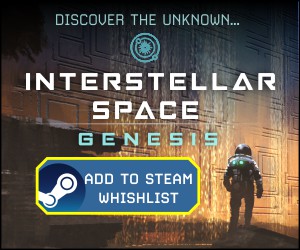
27 Comments
Related Articles:
- Star Ruler – A new 4x/RTS Hybrid by Blind Mind Studios
- Star Ruler 2 – Alpha Gameplay Footage With the Devs
- Star Ruler Review
- Indie Gala June – Star Ruler and Sword of the Stars Complete
- Star Ruler 2: Wake of the Heralds – Impressions

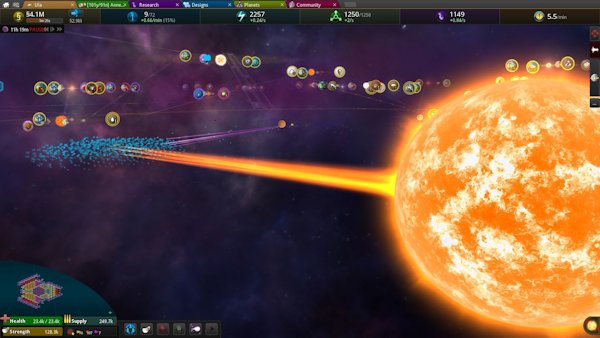
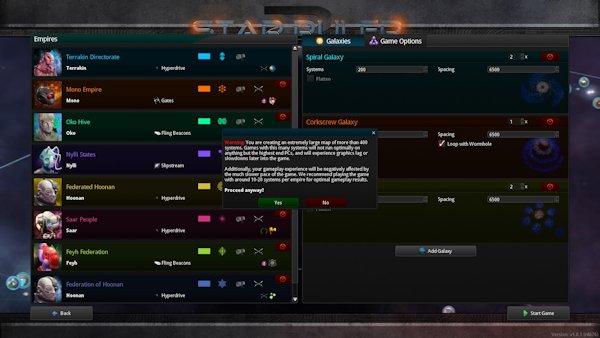
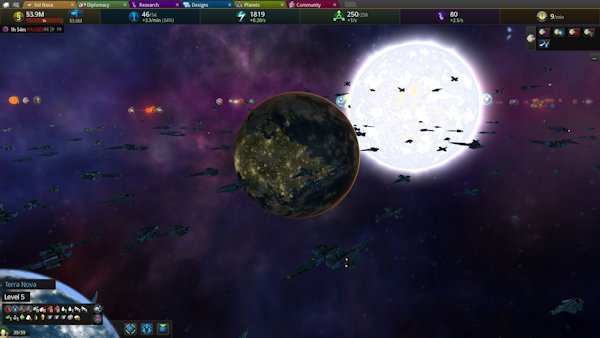
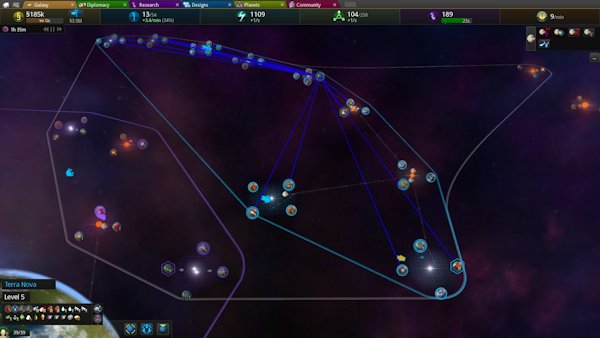
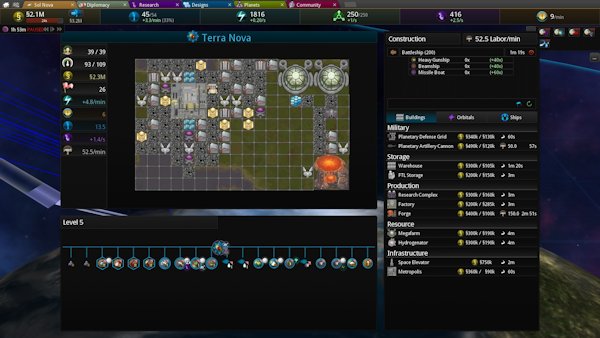
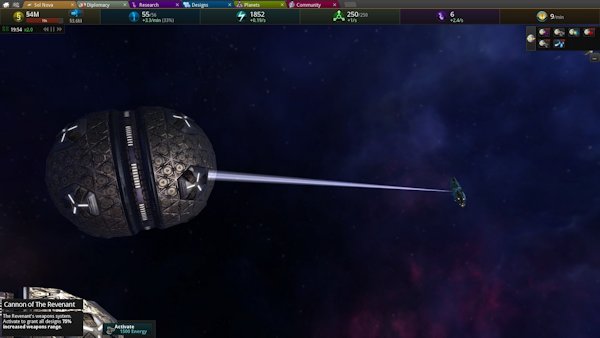
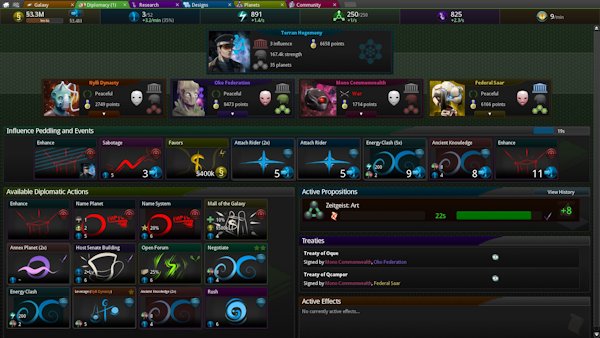
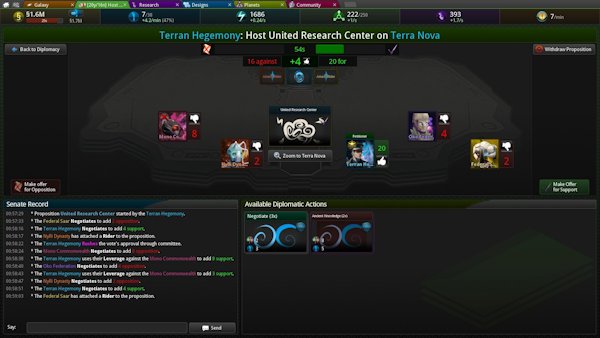
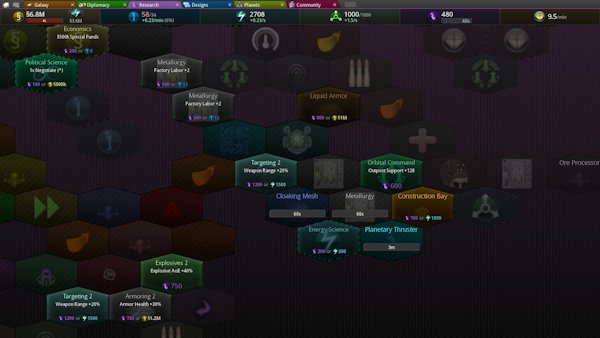
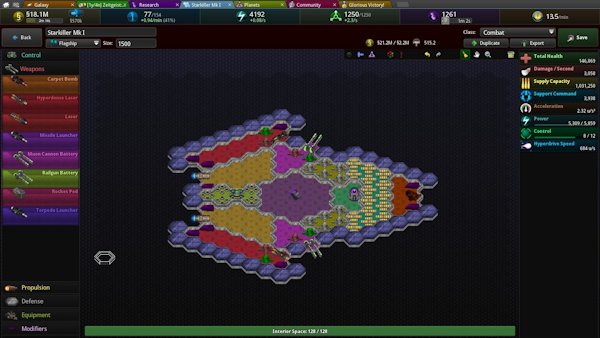
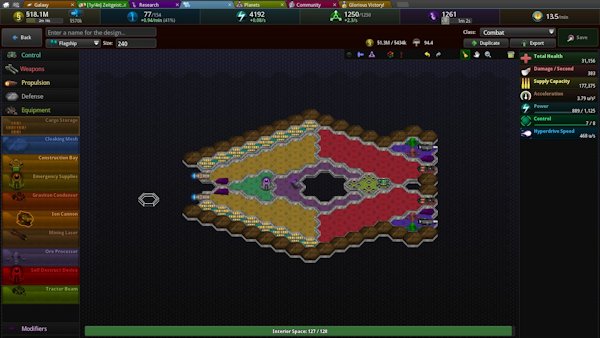
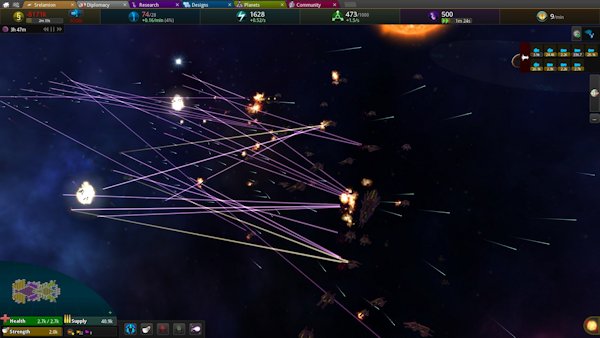
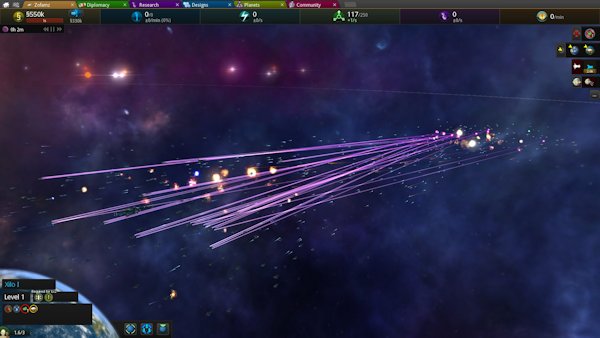
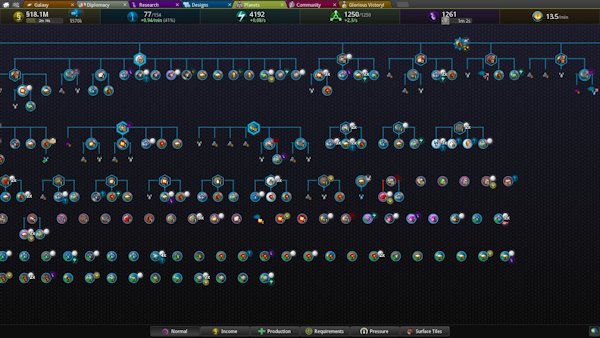
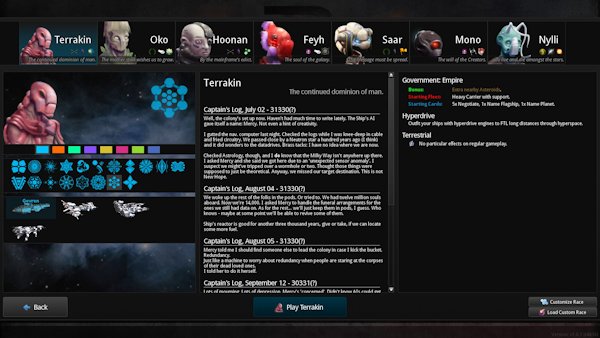
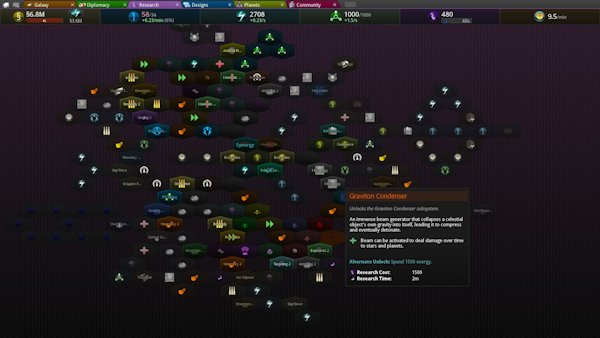

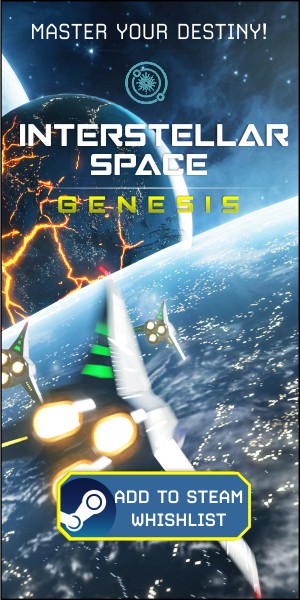


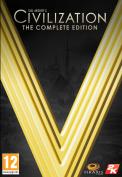


Thanks for writing the review, Edward.
Hmm, I have to applaud the creators for aiming high and going wild.
The downside to that is the obvious great features mixed in with terrible ones.
What makes me thinking about skipping this one is the card diplomacy and lack of winning conditions mostly, peppered with other annoyances.
I don’t really like fighting and prefer to win by other means.
I also tend to favor Turn-Based over Real-Time.
As an aside, I had/have great trouble playing Star Ruler 1.
At best, it crashes the game. At worst, my computer reboots.
There is a script which basically turns star ruler into a turn based strategy game.
It automatically pauses the game and when you hit enter, it lets a pre defined amount of time pass on the highest acceleration.
So you could for instance set a turn to one minute, hit enter and watch your actions unfold in a mere 6 seconds. Then the game pauses again.
Whew, very exhaustive review, Edward! My compliments!
I waited a long time after release to buy SR1, and on sale at that. I don’t particularly care for it due to the lack of immersion (which you mention in this review concerning SR2.) If I do buy SR2, it probably won’t be until it appears in a bundle at Humble Bundle or Bundle Stars.
I’ve observed that lack of immersion is a trait of most real-time 4X games: the player is bombarded with so many events requiring attention you are pretty much forced to rely on AI assistants and long-range views. This largely negates the impact of player-designed ships, player-specified rules of engagement, colony designs, etc.
Sins of a Solar Empire is the only RTS/4X game I’ve played that seems to avoid this manic play-style, probably because that game severely limits customization options. Maybe that is the key: RTS games are best when player customization is limited, while TB games are better offering a full customization experience.
Your review hinted at a pet peeve of mine: lack of feedback for custom designs. For example, DW, Stardrive, Star Ruler, and Horizon permit extensive ship/starbase customization, but the player has no idea how successful such designs will be until you are in combat. Even then, there is little way of knowing what caused your success or failure.
Space Empires V (an old and generally panned game) provided a solution to this problem: a simulator attached to the ship designer that allowed the player to test designs against other known ship/base/planet designs. This is such a brilliant addition to customization, I’ve never understood why other developers didn’t copy the idea. The feature is almost a game-within-a-game and saves considerable time, frustration, and treasure when generating custom fleets.
Star Ruler 2 features a design Sandbox where you can spawn ships at will and pitch them against one another.
It’s the main point where ships are designed. You can save them and then import the blueprints into a running game. Very good to figure out great ship designs.
I use it as sort of a minigame myself ;)
BE, big disappointment, Star Drive 2, disappointment, this, disappointment.
It’s enough to make me try and get Ascendancy running.
So basically Tactical Combat is just one huge blob blasting another huge blob with almost no control over the battle. All that rich design detail is essentially useless and wasted in actual combat. Why game devs, WHY?
Great review Edward, you really covered all the essential areas well. Pity this is just another mediocre 4x to add to the long list.
The combat is very reminiscent of Gratuitous Space Battles*. You build and design ships and fleets and then send them on their way. The battles are beautiful to watch and although I prefer tactical combat ala Sword of the Stars or MOO2 I really really like to watch space battles. So I’m okay with the combat the way it is.
There’s a lot of strategy about what planets you level up and how you defend them. You have to play defensively and offensively which is great. Lose a couple key planets and your entire empire could crumble. Knowing what planets are important to your enemy and blockading/taking those is critical.
Fleet placement and composition is very important. But you don’t really guide individual ships.
*I loved GSB 1 and will pick up GSB 2 in a few paydays.
Lol, well I’m happy I gave it a miss then because I really don’t like GSB exactly because there’s zero control and combat solely consists of sitting there passively watching two blobs blasting eachother as you whistle and twiddle your thumbs for 5 minutes.
If I want to watch a space battle I’ll just fire up Star Wars and grab a bag of popcorn. Unfortunately I think I must be in the minority since apparently many devs think we absolutely ADORE sitting there watching tactical combat “movies” in a 4x.
Honestly I prefer to have more tactical combat in space games. I like watching space battles but prefer more hands on options.
The last game I played that had tactical combat was Horizon. The game has come a long way with a few major patches and many minor patches. It’s okay. I don’t care for the colony management and I really hate that you can only design 4 of each ship type.
Other than SOTS 2 and Horizon, have any recent space 4x games even tried to have tactical combat?
I guess Distant Worlds at least has some semblance of tactical combat. You can click on ships or fleets and give them general move/attack orders, even if the RT aspect makes it difficult to manage effectively.
Other than that I really cant think of any other recent 4x game with tactical combat involving anything more complicated than sitting there staring at the screen while the game plays with itself.
I haven’t tried Horizon, I was put off by the original mediocre reviews. I might have to give it a try if it has tactical combat which actually involves tactics.
I’d wait for Horizon to go on sale before trying it out. It has tactical combat and some cool mechanics but it has issues as well. I haven’t played it in several months but they’ve made a lot of patches to the AI so I’ll probably give it a another go next weekend.
I’d personally love to watch space battles If they looked like Babylon 5/ BSG etc… I think gratuitous sp battles’ next instalment might get my cash if it’s in 3D or if GalCiv 3 battles actually look good and not the same every time with dodgy animations and lighting I.e. Beams that look like they were made by a Spirograph, and no idea who’s firing at who…
There’s an indie game in development called “Starsector” which seems to do a good job of involving the player in tactical space combat while still looking pretty good.
http://fractalsoftworks.com/
Unfortunately its still a long way from Babylon 5 quality space battles, its not a 4x and there’s almost no strategic layer….yet.
I do agree though that high quality graphics improve the shelf-life of the sit-there-and-watch-it combat experience significantly. Which is a good thing because there’s certainly no shortage of sit-there-and-watch-it 4x games and GalCiv3 is all set to add yet another one to the list.
Starsector is a really fun 2D flee-combat sim right now with features what dwarfs most AAA space sim titles.
Unfortunately, it’s easily another 18 months away from reaching its full potential as Mount & Blade in space.
My advice is to keep it on permanent back burner and check it out with the rave reviews come out…probably a week after HL3’s released. =P
You should try going tactical on the combats and see what the system is capable of. Look for my explanation below.
Thanks for clarifying. The review left me completely cold on the game to be honest, but if you can simulate turns (and it works reasonably well)and real, hands on tactical combat is available (which is deep enough to be interesting) then it might be something I would like.
The game features tactical combat. It’s just more of an optional thing. When it comes down to it, a player using tactical combat will win against someone just sending a blob.
Let me explain:
You can decide how large your ships are. So, you can build one size 400 Ship. Big and bad and full of firepower. Or you could build 4 size 100 Ships. While all four of them combined will be a bit more expensive than the single 400 ship, in return you get 4 ships you can command at your leasure. Taking into account that most vessels are designed to have superior armor on the front, that gives you an incredible edge. You can use one ship to take the enemy up front, while the others close in from other sides, preferrably from an angle where the target is only slightly armored.
Of course there is also the option to design flagships which completly forgoe any support ships. As an example:
Create a medium sized ship which has only a huge laser as a weapon and add some targeting system to it. You get a very long range sniper ship. ideal to support a more beefy brawler type ship. And yet again… tactics won the fight.
This game is so utterly deep, I havn’t seen one review actually scratching more than the surface… the really good one above included.
Perhaps I wasn’t clear in the article, but I do mention these:
“The player can scale the ship to whatever size they want.”
“They’re generally smaller, but nothing stops the player from making flagship sized support crafts to go with their planet sized flagships.”
I do admit, I don’t stress that this can be a flagships with only 3 large support ships, or that you can have support-less flagships. Nor do I distinguish the approach between making one 400 size ship versus four 100 size ships. However, I do mention there isn’t many limits. One doesn’t expect a review to list all the possibilities. It’s a review, not a strategy guide. ;)
And then:
“If you have three fleets, you could have the other two attack from another direction, thus flanking the enemy and hitting their side or rear modules. Positioning matters and ships do a good job to face their assailant or to bring their weapons to bear. One needs numerical superiority and some maneuverability to achieve a flanking attack.”
Sounds familiar? ;)
I appreciate the compliment, but you can’t really say I didn’t mention these. :)
I loved Star Ruler 1 and so far I’m loving Star Ruler 2. They are giant sandboxes full of fun toys you can research, build, and play with. Much like the Space Empires series and Distant Worlds the Star Ruler games are at their best when you bring a certain amount of your own imagination and roll playing to the game. I understand a lot of people don’t like that.
Bought game in January despite knowing I won’t actually play it much. Managed 10 hours so far. Can’t seem to enjoy it. Main reason is as pointed out by mark, the combat. They probably had the idea of reducing micromanagement and such with the blob system but they took out ALL the actual combat tactic & strategy with it. It’s just ship design & # ships that determines ‘combat’ (it’s more like a simulation of sorts). Nope. I won’t accept such a 4x game anno 2015.
I said it above and I can just repeat it… the game features tactical combat. Too few people play it that way and those which do always win.
It’s just that most people think bigger=better and more supports=better.
Having several smaller ships actually gives you a huge advantage over your enemies.
Two size 350 Ships always beat one size 700.
Moreso 10 size 70.
Plus you can create more specialized ships that way… tactics all the way.
I agree with most of the review. SR2 is a well-done, stable and fun to play game, but the economic model, while logically consistent and challenging, unfortunately breaks the immersion. It just doesn’t feel like playing a space game
I love Star ruler 2, plenty of things to do , MP CoOP which I love to play,
and battles are what Dominions 4 are, you orchestrate, but not direct the exact happenings, so get a few surprises.
Devs announced one huge free DLC/expansion, another payed later down the road, and I am wholeheartedly in on it.
Another thing, why doesnt this mark show on metacritic? Does someone have to apply Spacesector there?
It’s not a bad game, but it is disappointing in some ways. I like the sandbox modes though.
– Races need to be more “different” in a sense
– There are a few immersion breaking design decisions
I think that with a few expansions, it might become a great game.
Oh man… I really should have come here earlier.
Oh, and the tech tree is fixed. Redone once again and perfectly readable and usable. I have to admit the last iteration was a nightmare.
I believe that patch was released a few weeks after this review went live.
We tend to announce major ‘overhaul patches’ or major patches for games that desperately needed them. Obviously, we re-review a game for expansions and major DLCs. Smaller patches are not covered individually.
Though our readers are always welcome to post updates if they want, sometimes one of us might as well in the comment section.
However, for anyone that is curious, here is a quick image of the overall tech tree. They made it much clearer and the connections are much easier to read (and in turn seeing distinct techs are easier).
http://i.imgur.com/5ZSyyrZ.jpg